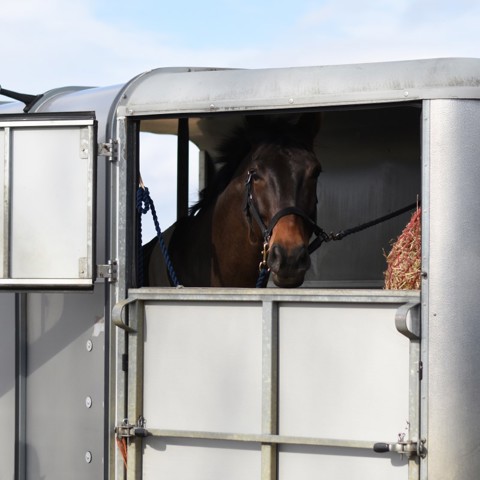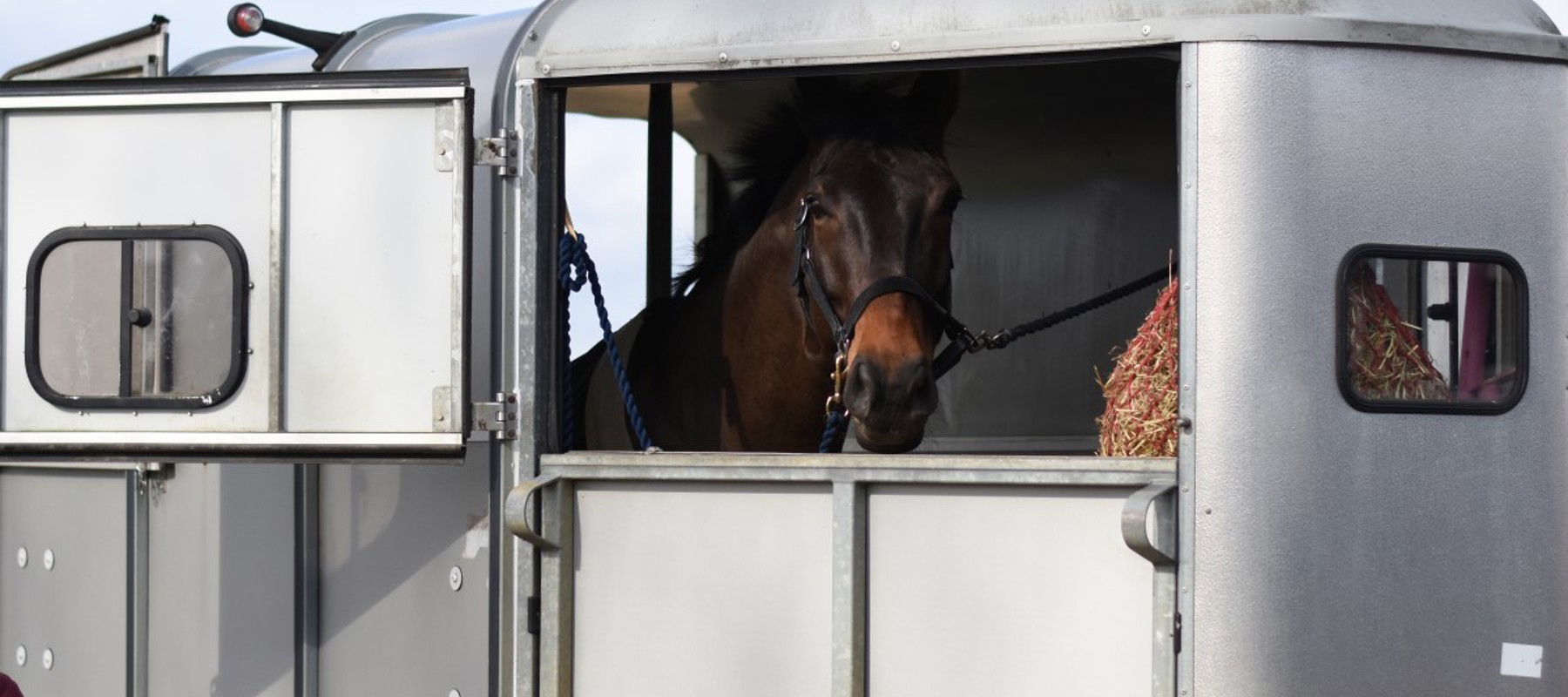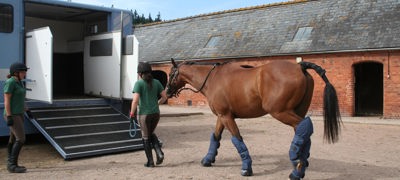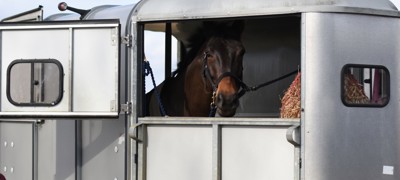All vehicles used for towing and horseboxes under 3.5T should have a current MOT. Horseboxes over 3.5T should have an up-to-date plating certificate. We recommend getting your trailer or horsebox professionally serviced at least once a year. Don’t take it for granted that the serviceability of the floor will be looked at, always double-check this will be examined.
Our pre-travel checks list is a guide on what to look for before you set off. Make sure you refer to your manufacturers handbook as our checks are not exhaustive. Don’t forget to check the vehicle that will be towing your trailer too.
Did you know..? It's illegal to travel in the back of a trailer or horsebox with your horse!
Essential pre-travel checks
Body of vehicle
chevron-down
chevron-up
- Check the outside and inside for any obvious signs of damage. This includes rust, damp patches and any sign of rotting.
- Park the vehicle on level ground and if the trailer/horsebox leans to one side, seek professional advice.
- Look for water damage around any seals.
- Partitions and breast/breech bars - check all pins are in place and there are no sharp edges or rips in the partition.
- Your trailer number plate must match your vehicle plates which is registered with the DVLA.
Tyres
chevron-down
chevron-up
- Check tread depth: make sure it meets the minimum legal requirement of 1.6mm across ¾ of the breadth (for over 3.5t it is 1mm).
- As of February 2021, tyres aged 10 years or older will be prohibited from use on the front axles of HGVs (vehicles with a maximum gross weight of 3,500kg). This includes horseboxes. For further information please check the Gov website.
- Remove any stones and other objects embedded in the tread. Look out for any bulges, lumps or cuts.
- When not in use, cover the wheels to help prevent the UV light from defecting the tyre wall.
- Look at your manufacturer’s handbook for the correct tyre pressures for both your vehicle and/or trailer and adjust them accordingly.
- Park on a hard surface or a well-drained ground when the transport isn’t being used for a period of time. Parking on damp ground can reduce the life of the tyres.
Electrics and lights
chevron-down
chevron-up
- Check that all your lights are clean and in working order both externally and internal when connected. You can check your indicators by turning on your hazard lights.
- Check the connection lead and sockets for any signs of wear and tear
- If the cable is split and wires showing, professional repair is needed
Floor and ramp
chevron-down
chevron-up
- Lift the rubber matting or floor covering to check the floor for any signs of rot, corrosion or damage. Look from underneath the transport too. Any signs of damage should be looked at by a professional before travelling your horse.
- Oil the hinges and springs frequently to prevent rust or damage
Weights
chevron-down
chevron-up
- Make sure you know the true payload of your horsebox. If you aren’t sure, then you can take the horsebox to a weighbridge. Find your closest weighbridge.
- Check the trailer and towing vehicle are suitable and the combination doesn’t exceed the legal weight limits; always check your manufacturer’s handbook for both your towing vehicle and trailer
- You should carry spare water, feed and roughage in case of a breakdown or delays – but be aware when using a trailer, if you load this at the front you could also exceed the nose weight.
- Know the weight of your load – know the weight of your horse(s), people in the vehicle, and all equipment including any water and forage
At the weighbridge
- Weigh the horsebox empty but with enough fuel and water for regular use.
- Ask for the weighbridge certificate that will state the unladen weight of your box
- Once you know the unladen weight, take this away from the maximum your horsebox should weigh (3.5T/7.5T etc). This will leave your payload weight limit.
- The payload weight limit is the total weight of all that you carry, including driver, passengers, horse(s), tack and equipment, water etc
Driving licence
chevron-down
chevron-up
Make sure you have the correct driving entitlement on your license for driving or towing. You can check what vehicles you are eligible to drive on the UK Governments website.
Trailer hitch/jockey wheel
chevron-down
chevron-up
- Lightly grease the towbar, roughly every three months or more often depending on use
- Check the security of the tow hitch by carefully winding down the jockey wheel. If secure, the rear of the vehicle will raise slightly.
- With the tow hitch connected, fully wind up the jockey wheel and secure.
- The jockey wheel must be secured when fully up with a safety pin to lock it into position
Top tip: Hitching up a trailer can be difficult if you don’t have a reversing camera on your vehicle. Lean a broom against the hitch to give you something to aim towards or invest in a trailer hitching mirror.
Brakes and breakaway cable
chevron-down
chevron-up
- If leaving the trailer for a prolonged period, securely place wheel chocks either side of the wheels and then release the trailer parking brake. It stops the brakes from seizing on the trailer. Remember to put the brake back on before you hitch up next time. Note: it may not be suitable to do this if the ground is not level.
- Breakaway cables are a legal requirement; this activates the trailer brakes should the trailer become detached from the towing vehicle. The cable must be attached to a purpose made tow bar ring or a substantial part of the vehicle.
- Make sure there is no wear and tear along the cable and the fixings are in working order
- If your brakes are seized or you have problems with the cable, contact a professional mechanic
Request a free ‘Are you safe to travel?
If you would like a free copy of our glovebox guide to keep in your vehicle, let us know and we’ll post one out to you.




